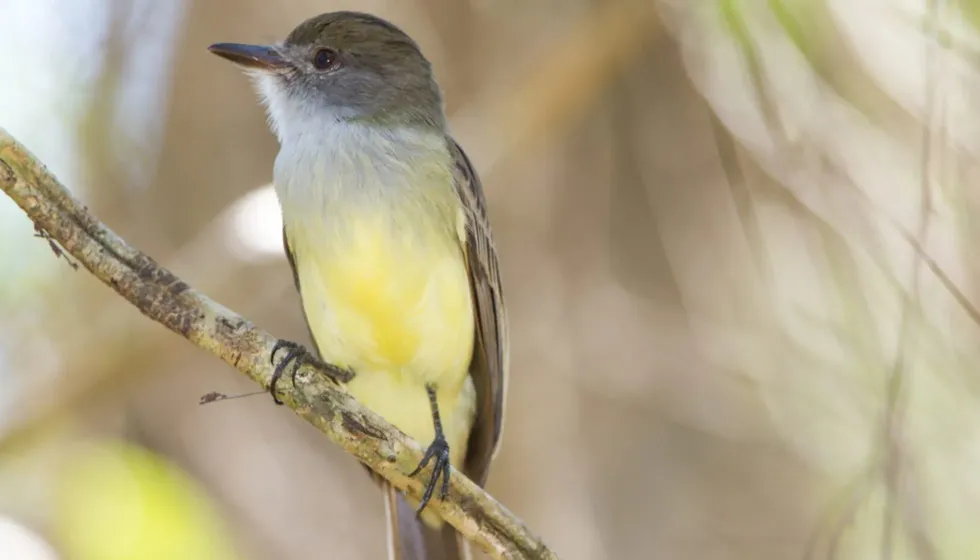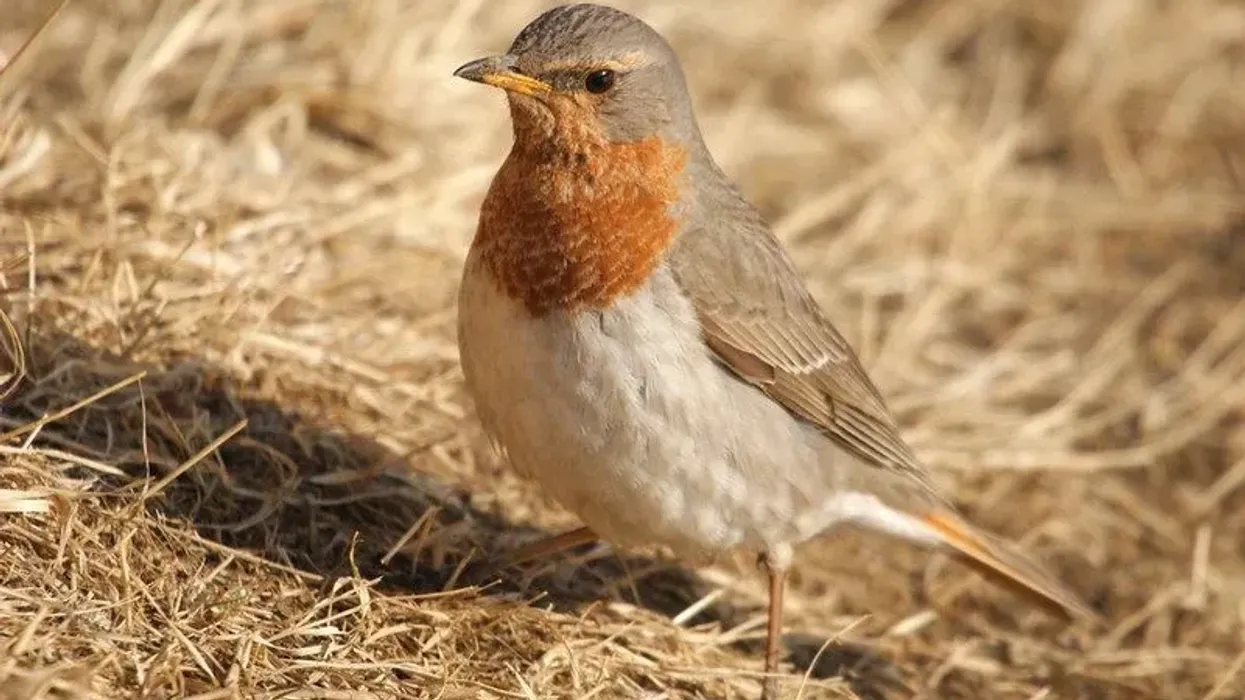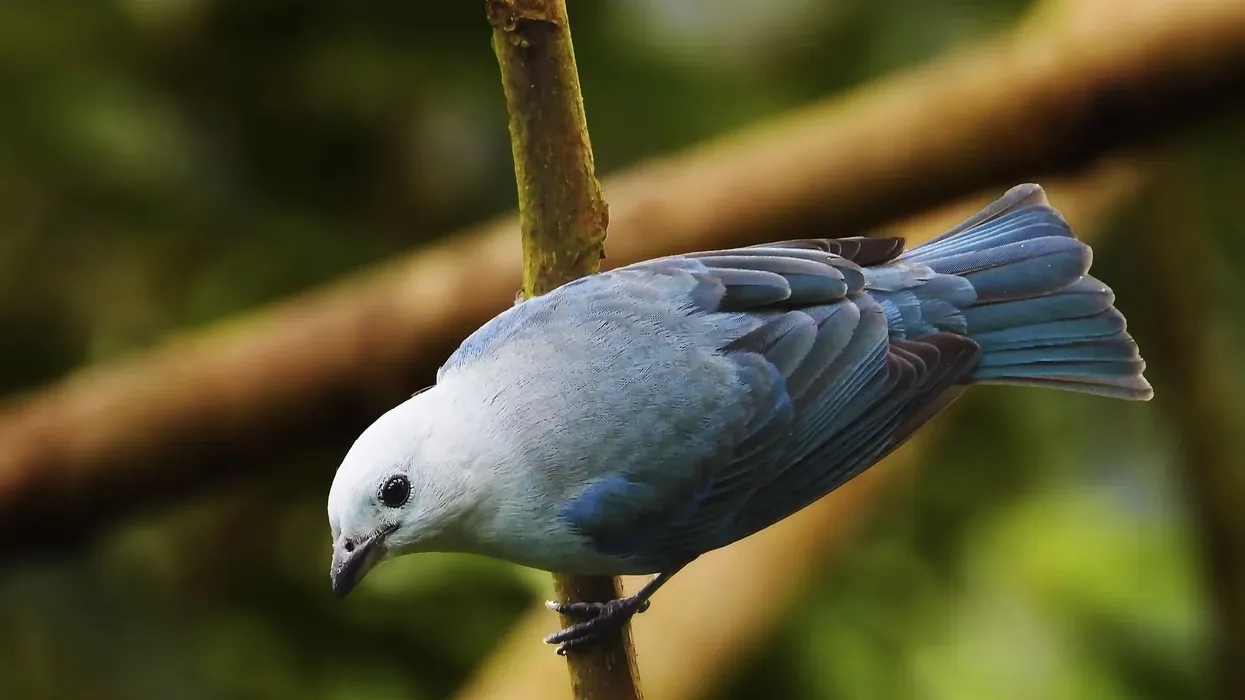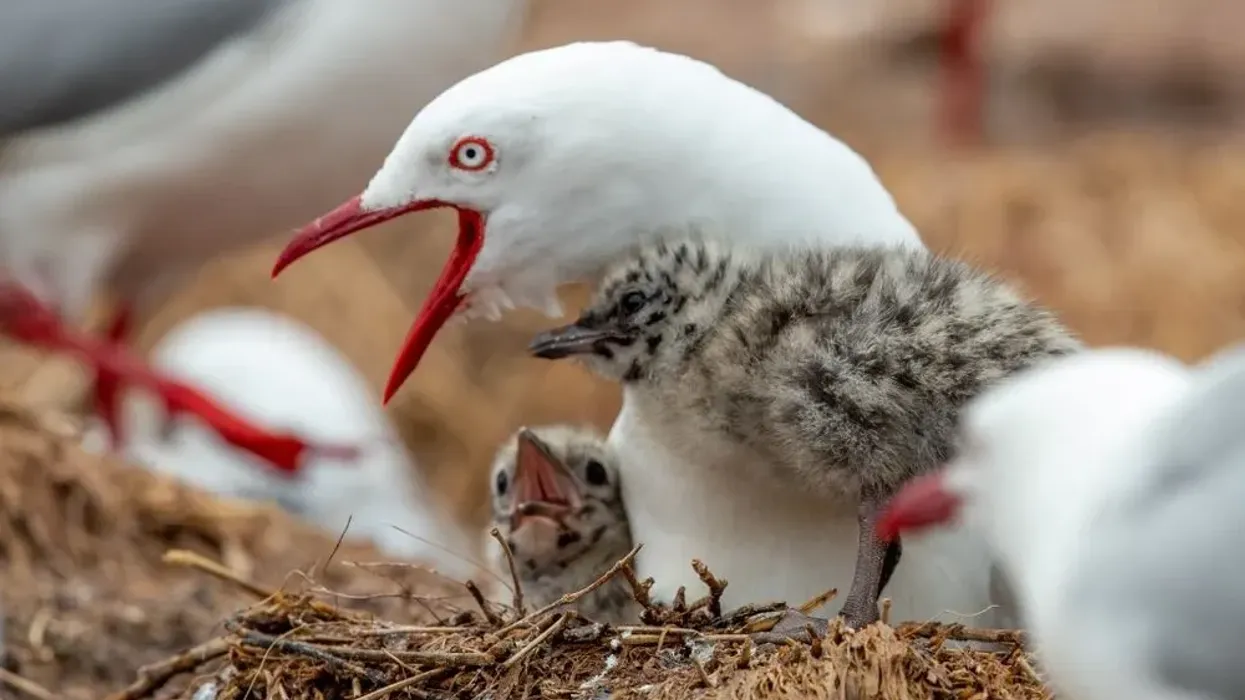The brown-crested flycatcher is a pretty North American species of bird that is famous for its unique call and song. These birds are small in size and, as the name suggests, they are known for catching insects in mid-air.
You will find this species of bird in great numbers in the woodlands of California especially in the southern region. This species of bird breeds in southern Nevada, central Arizona, and southern Texas. These birds are quite colorful and are a treat to the eyes.
These birds have olive-brown upperparts and a dark head with a short crest. They have a lemon yellowish belly and a grayish breast.
Some similar species to this bird include the dusky-capped flycatcher, the ash-throated flycatcher, and the great-crested flycatcher. This species is known to breed in natural forest dents or in nooks and corners of a tree trunk filled with feathers and branches that has been abandoned by other birds.
For more relatable content, check out these swallow facts and evening grosbeak facts for kids.
Brown-Crested Flycatcher Interesting Facts
What type of animal is a brown-crested flycatcher?
A brown-crested flycatcher is a species of bird found mainly in North America and certain parts of South America too.
What class of animal does a brown-crested flycatcher belong to?
A brown-crested flycatcher is a type of bird that belongs to the Tyrannidae family. The scientific name of this bird is Myiarchus tyrannulus. It is in the Aves class.
How many brown-crested flycatchers are there in the world?
The exact number of these birds is unknown but according to statistics, the population of this species is increasing and they are far from being endangered. Their population is spread over 10,193,097 mi2 (26,400,000 km2).
Where does a brown-crested flycatcher live?
The brown-crested flycatcher, Myiarchus tyrannulus, is found in woodland habitats of the southern regions of California, Nevada, and Texas. You will also find them in central Arizona and during winter, migration takes place in Mexico and the southern region of Florida.
What is a brown-crested flycatcher's habitat?
The brown-crested flycatcher, Myiarchus tyrannulus, lives in dry woodlands and saguaro cactus deserts.
Who do brown-crested flycatchers live with?
The brown-crested flycatcher, Myiarchus tyrannulus, usually lives in groups. Since their population is gradually increasing, it is becoming easier to spot them.
How long does a brown-crested flycatcher live?
The lifespan of the brown-crested flycatcher range between two and 10 years.
How do they reproduce?
The brown-crested flycatcher, like the great crested flycatcher, usually nests in natural cavities formed in dead trees. They look for trees that are quite high from the ground.
If females think that the cavities are too deep, they will cover the cavities with grass, twigs, feathers, moss, or paper. This is how you can identify a brown crested flycatcher nest. Females remain in the nest while the male flies around to catch insects for the mother.
The female lays between three and six eggs in one go and the incubation period lasts for around two weeks. Once the eggs hatch, the newborns appear to be without feathers, but soon a gray throat appears.
What is their conservation status?
According to the IUCN Red List of Threatened Species, the status of these birds is categorized under Least Concern. According to statistics, the population of this species of birds, along with many other similar species of flycatchers, is increasing, and therefore they are far from being endangered.
However, an increase in the rate of habitat loss suffered by these birds risks leading to the decline of these birds as it will disrupt their breeding habits.
Brown-Crested Flycatcher Fun Facts
What do brown-crested flycatchers look like?
These flycatchers are one of the most famous North American species of birds. The upperparts of these birds are gray-yellow in color while the underparts including the belly have a gray and yellow tinge.
The major identification mark of these birds is their unique tail which has a great volume of rufous on its inner wing. Dark stripes and rufous colors are present until the very tip of the tail.
The bill of these birds is long and black in color. On the other hand, a newborn is comparatively pale in color.
The edge of the wing is rough and on the inner region of the tail, the plumage is more rufous. Baby flycatchers also do not have a brownish or black stripe.

How cute are they?
These flycatchers are one of the most colorful birds that you can locate in North America, and in South America especially in Mexico during their migration in winter.
The most unique feature that makes these brown-throated flycatchers a treat to the eyes is the rufous color in their tail region and the lovely color on their breast.
If you enjoy bird watching, and you are in the woodland habitats of Texas or Mexico, do take the help of a field guide who will help you locate this beautiful species.
These birds which inhabit south America are fairly harmless and that makes them even cuter!
How do they communicate?
The brown crested flycatcher call is quite unique. These flycatchers have a sharp distinctive brown crested flycatcher sound, and while breeding they call out with a rasping voice. Their song comprises quite complicated notes which makes the song very soothing to the ear.
How big is a brown-crested flycatcher?
The exact length of the brown crested flycatcher bird in Austin, Texas or Mexico is unknown but more generally, an adult can grow up to 8 in (20.3 cm).
How fast can a brown-crested flycatcher fly?
The exact speed at which they fly is not known but they are pretty aggressive and swift hunters. They are quite fast while hunting insects mid-air.
At times, they also lose control of their speed and crash into trees. A female nests in a perch while a male hunts down flying insects and brings them back to the perch where the female is. Their strong wings allow them to travel long distances during the breeding season in winter.
How much does a brown-crested flycatcher weigh?
These birds are not at all heavy. They weigh around 0.1 lb (0.03 kg)
What are their male and female names of the species?
Both male and female birds of the species have the same name. They both are known as Myiarchus tyrannulus.
What would you call a baby brown-crested flycatcher?
A baby bird is called a chick.
What do they eat?
During the breeding season in winter, the male is responsible for looking for food for the baby and the mother. The female should also ensure that she builds the nest appropriately so that the male can easily get the food back to the nest. They eat similar things to other birds. Their diet includes beetles, cicadas and hummingbirds.
Are they dangerous?
Usually, these birds are not dangerous and they pose no threat to humans. When a male and female breed, they tend to become a bit aggressive if they are one of the last pairs to arrive on the mating ground. This aggression is as a result of competitition to look for spots in trees.
Would they make a good pet?
These birds are similar to other flycatchers who thrive best in the wild. They are not harmful but if they are commercialized the population will probably decrease. These birds should be left free among other wildlife birds and animals.
Did you know...
They feed on female cicadas that are about to lay eggs.
They are collectively known as 'zippers' or 'zappers'.
These birds take part in migration during winter.
Are brown-crested flycatchers endangered?
According to statistics, the population of these birds is increasing in North America and they are not on the verge of extinction or becoming endangered. However, in the future, a loss of habitats due to forest fires, deforestation, and climate change might harm them. Conservation efforts are important to prevent this from happening.
What is the difference between a brown-crested flycatcher and a great crested flycatcher?
Among all wildlife creatures, these two breeds of Passeriformes birds are pretty similar, but there are still some differences between them. For example, the great crested flycatcher is a bit longer than the brown crested flycatcher.
The great crested flycatcher also has a reddish-brown upperpart while the brown-crested flycatcher has a brown-yellow upperpart. Finally, the great crested flycatcher inhabits woodlands of deciduous trees while the brown-crested flycatcher is more likely to be found near the ground of open woodlands or saguaro cactus deserts in North America.
Here at Kidadl, we have carefully created lots of interesting family-friendly animal facts for everyone to discover! Learn more about some other birds from our umbrellabird facts and fox sparrow facts pages.
You can even occupy yourself at home by coloring in one of our free printable brown crested flycatcher coloring pages.









